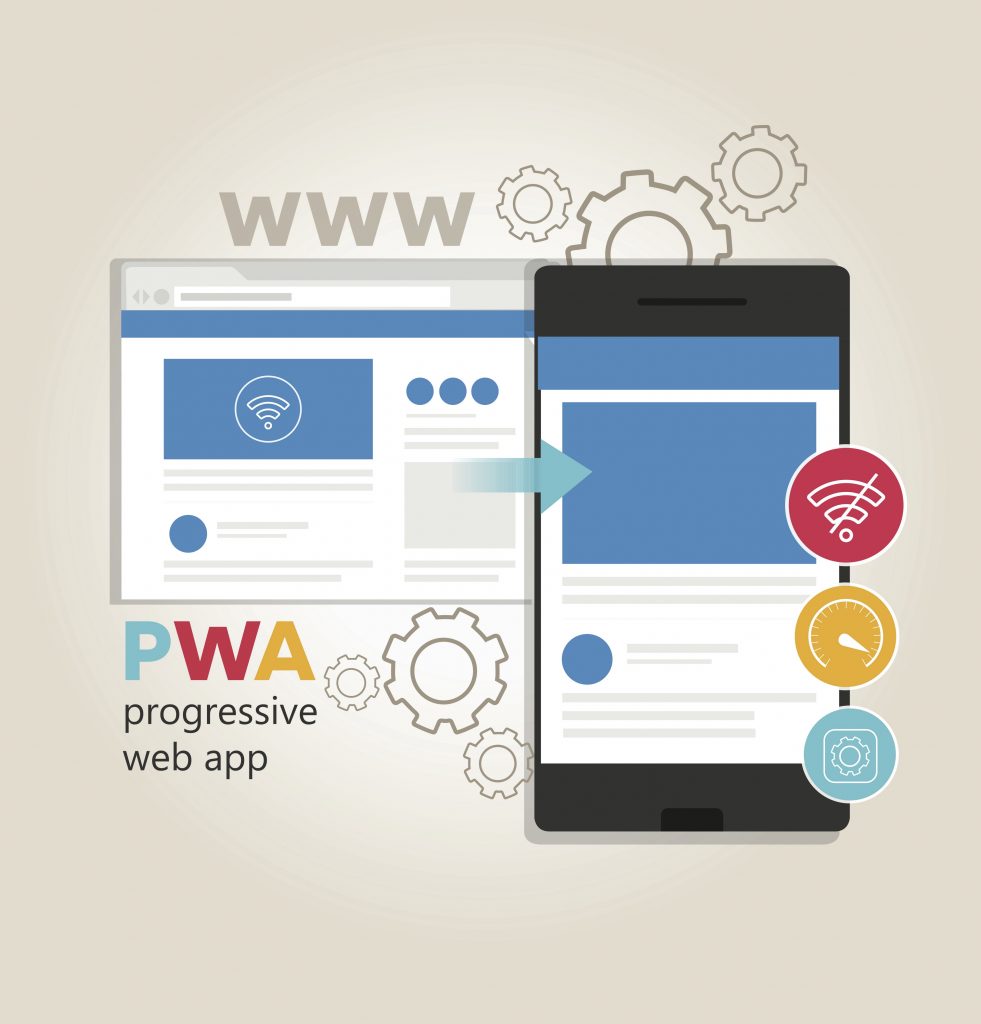Click Here To Start With Part 1: The Limitations No One is Telling You

In this 5 part series, you’ll hear from development and user experience experts as well as our President about the pitfalls and advantages of PWAs. And finally, when we recommend them and when we don’t.
Do PWAs Match Up To Native Apps When It Comes To Technology Capabilities?
A native app provides access to deeper native functionality than a Progressive Web App. Depending on your app’s goals, these differences can make or break your app’s success.
Accella’s Director of Mobile Development, Jacob Haskins, outlines the key differences and why they matter below.
PWAs Lack Data Storage
LIMITATION: Progressive Web Apps limit offline data storage to 50Mb, and persistence of that data is not guaranteed. The phone will although sometimes a phone will grab space from the PWA as needed, rendering the PWA offline capabilities useless. if necessary.
WHY IT MATTERS: The user experience is no longer guaranteed. You can’t always provide seamless re-entry or a personalized experience, something users have come to expect from every app they use. If your native app relies on access to offline libraries of data and documents, you will not be able to deliver a fully functional offline app experience.
PWAs Lack Hardware-Related Capabilities
LIMITATION: It might not apply to every organization’s needs, but if you want your experience to use specific phone features, such as the accelerometer or Bluetooth, PWAs cannot access these features.
Specifically PWAs cannot access or utilize the following native features:
- Bluetooth
- iOS Push Notifications
- Face and Touch Id
- Any Hardware Sensor Functions
- Camera
WHY IT MATTERS: Your Progressive Web App’s access to native phone features is limited in the same way a website is by browser functionality. So while the app looks native, it misses out on some of the key differentiators of a native app.
PWAs Have Security Limitations
LIMITATION: PWAs cannot utilize a phone’s enhanced security features, such as Face or Touch ID, also due to lack of access to native hardware functions.
WHY IT MATTERS: Users come to expect these security features for ease of use when logging in and purchasing. Without them, your user experience suffers.
PWAs Have No iOS Notifications
LIMITATION: Progressive web apps cannot use native iOS push notifications or access the notifications center.
WHY IT MATTERS: Push notifications and alerts are central to many app re-engagement strategies as well as basic alert and communication functionality. PWAs cannot support them on iOS devices. As notifications are a key driver of revenue and engagement for many apps, this is one deficiency to take very seriously.
PWAs Can Have Performance Issues
LIMITATION: Since Progressive Web Apps are essentially websites, load times are dependent on network speed and other factors.
WHY IT MATTERS: Native apps are less reliant on network connection and load more seamlessly. A PWA can appear slow and inconsistent in comparison, providing a very un-native like experience.
Technology Limitations: The Bottom Line
A PWA cannot use many of the native phone features that native apps can, which can impact the functionality in your app and limit how users engage and re-engage with your product. If you’re looking to reduce development time and on-going maintenance, then evaluate alternative architectures and code bases, such as React Native, to balance cost savings with the optimal user experience and native feature offerings.
Next Up: Progressive Web Apps (PWAs) Part 3: A UX Designer’s POV
What do you think about PWAs? Let us know in a comment below.






